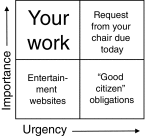Creating effective career development programs
- PMID: 28649449
- PMCID: PMC5471822
- DOI: 10.1017/cts.2016.30
Creating effective career development programs
Abstract
This paper is the fourth in a 5-part series that focuses on educating and training the clinical and translational science workforce. The goal of this paper is to delineate components of effective career development programs that go beyond didactic training. All academic health centers with a Clinical and Translational Science Award have a KL2 career development award for junior faculty, and many also have a TL1 training program for predoctoral and postdoctoral fellows. The training across these programs varies, however junior investigators across the United States experience similar challenges. Junior investigators can get overwhelmed with the demands of building their own research program, particularly in academia. 1Often, they are sidetracked by competing demands that can derail their progress. In these situations, junior investigators experience frustration and may search for alternative career paths. By providing them with additional professional skills in the 5 domains of: (1) self-awareness; (2) selecting the right topic and securing funding; (3) getting adequate support; (4) working with others; and (5) managing yourself, your career, and your demands. We will give junior investigators additional tools to manage these demands and facilitate their own career success.
Keywords: Clinical and translational science awards; Clinical and translational science workforce; Education; Training.
Figures
References
-
- Verquer ML, Beehr TA, Wagner SH. A meta-analysis of relations between person-organization fit and work attitudes. Journal of Vocational Behavior 2003; 63: 473–489.
-
- Bell RM, et al. Determining personal talents and behavioral styles of applicants to surgical training: a new look at an old problem, part 1. Journal of Surgical Education 2011; 68: 534–541. - PubMed
Grants and funding
LinkOut - more resources
Full Text Sources
Other Literature Sources

